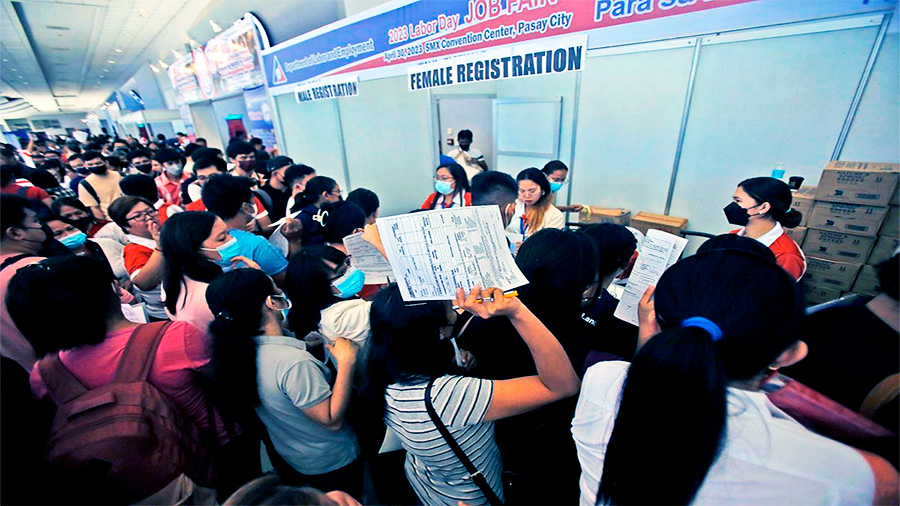
The unemployment index is one of the most critical indicators for assessing a country’s economic health. It measures the percentage of people in the labor force actively seeking work but unable to find employment. By reflecting job market trends, consumer spending power, and overall economic stability, the unemployment index offers invaluable insights for policymakers, businesses, and individuals. This article explores the significance of the unemployment index, its components, and how it shapes economic decisions and strategies across sectors.
What Is the Unemployment Index?
The unemployment index, commonly expressed as the unemployment rate, represents the proportion of the labor force without a job but actively seeking employment. It serves as a snapshot of a nation’s labor market and provides insights into the economy’s ability to create jobs and support its workforce.
Key Definitions
- Labor Force: Includes individuals aged 16 and older who are either employed or actively seeking employment.
- Unemployed: Refers to individuals without a job who are actively looking for work and available to start employment.
- Not in the Labor Force: Individuals who are neither employed nor seeking work, such as students, retirees, or discouraged workers.
The unemployment index is calculated as a percentage by dividing the number of unemployed individuals by the total labor force.
Components of the Unemployment Index
Understanding the components of the unemployment index provides a clearer picture of its implications for the economy. Each component reflects different aspects of labor market dynamics and contributes to the overall unemployment rate.
Types of Unemployment
- Cyclical Unemployment: Results from economic downturns or recessions when demand for goods and services declines, leading to job losses.
- Structural Unemployment: Occurs when there is a mismatch between workers’ skills and the jobs available in the economy, often due to technological advancements or industry shifts.
- Frictional Unemployment: Refers to temporary unemployment as individuals transition between jobs or enter the workforce for the first time.
- Seasonal Unemployment: Affects industries with seasonal work patterns, such as agriculture or tourism.
Demographic and Regional Variations
The unemployment index is often broken down by demographic groups, such as age, gender, education level, and ethnicity, as well as by geographic regions. These breakdowns highlight disparities in labor market outcomes and guide targeted policy interventions.

Why Is the Unemployment Index Important?
The unemployment index is a barometer of economic health, influencing decisions made by governments, businesses, and individuals. Its significance lies in its ability to reveal underlying economic conditions and predict future trends.
Indicators of Economic Performance
A rising unemployment rate often signals economic distress, indicating reduced business activity and weaker consumer spending. Conversely, a declining unemployment rate suggests economic growth, increased demand for goods and services, and a healthier labor market.
Influence on Policy Decisions
Policymakers use the unemployment index to shape fiscal and monetary policies. For instance, during periods of high unemployment, governments may implement stimulus measures, such as infrastructure projects or tax cuts, to boost job creation. Central banks may lower interest rates to encourage borrowing and investment.
Impact on Consumer Confidence
Unemployment directly affects consumer confidence and spending behavior. Job security and income stability influence individuals’ willingness to make significant purchases or investments. High unemployment levels often lead to reduced consumer spending, further dampening economic growth.
How Businesses Use the Unemployment Index
Businesses rely on the unemployment index to make strategic decisions regarding hiring, pricing, and market expansion. It provides valuable insights into labor market conditions and consumer behavior, enabling organizations to adapt to economic changes.
Hiring and Workforce Planning
In a low-unemployment environment, businesses may face challenges in attracting skilled workers, leading to higher wages and increased recruitment costs. Conversely, high unemployment offers a larger pool of available talent, enabling companies to negotiate more favorable hiring terms.
Pricing and Product Strategies
Businesses adjust their pricing and product strategies based on unemployment trends. For example, during periods of high unemployment, companies may focus on offering affordable products or discounts to cater to cost-conscious consumers.
Market Expansion and Investment
Unemployment data helps businesses identify regions with favorable economic conditions for expansion. Areas with low unemployment may indicate strong consumer spending power, while regions with high unemployment may present opportunities for cost-effective hiring or targeted product offerings.

Challenges in Measuring Unemployment
While the unemployment index is a valuable economic indicator, it is not without limitations. Understanding these challenges helps contextualize its findings and informs better decision-making.
Underemployment
The unemployment index does not account for underemployment, where individuals work fewer hours than desired or hold jobs below their skill level. This can lead to an incomplete picture of labor market health.
Discouraged Workers
Discouraged workers who have stopped actively seeking employment are excluded from the labor force and, consequently, the unemployment calculation. This omission may understate the true extent of joblessness during economic downturns.
Informal Employment
In many economies, informal or gig work is not captured accurately in unemployment statistics, further complicating the interpretation of labor market data.
Trends and Insights from the Unemployment Index
Examining historical trends and current unemployment data provides valuable insights into economic patterns and potential future developments.
Long-Term Trends
Over the decades, global unemployment rates have been influenced by factors such as technological advancements, globalization, and economic policies. Understanding these trends helps contextualize current labor market conditions and anticipate shifts in employment patterns.
Post-Pandemic Recovery
The COVID-19 pandemic caused significant disruptions to labor markets worldwide, leading to sharp increases in unemployment. As economies recover, tracking unemployment rates reveals the pace and effectiveness of recovery efforts, as well as ongoing challenges such as skills mismatches or industry shifts.
Regional Disparities
Unemployment rates often vary significantly across regions, reflecting differences in economic structures, industrial bases, and policy approaches. These disparities highlight the need for targeted interventions to address local labor market challenges.
The Future of the Unemployment Index
Advancements in data collection and analysis are poised to enhance the accuracy and utility of the unemployment index. Real-time data, predictive analytics, and integration with other economic indicators will provide deeper insights into labor market dynamics.
Real-Time Monitoring
Digital platforms and big data analytics enable real-time monitoring of labor market conditions, offering timely insights for policymakers and businesses. This improves responsiveness to economic changes and supports more effective decision-making.
Predictive Insights
AI and machine learning models analyze historical data and current trends to forecast unemployment rates, helping stakeholders prepare for potential challenges or opportunities.
Integration with Broader Metrics
Combining unemployment data with metrics such as wage growth, productivity, and consumer spending provides a comprehensive view of economic health, enabling more nuanced analyses and strategies.
The Conclusion
The unemployment index is a vital tool for understanding economic health and labor market dynamics. By measuring joblessness and providing insights into employment trends, it guides decisions across sectors, from government policy to business strategy. While challenges remain in capturing the full complexity of the labor market, advancements in technology and data analytics promise to enhance its accuracy and relevance. As economies continue to evolve, the unemployment index will remain an indispensable indicator, shaping efforts to promote growth, stability, and prosperity.




